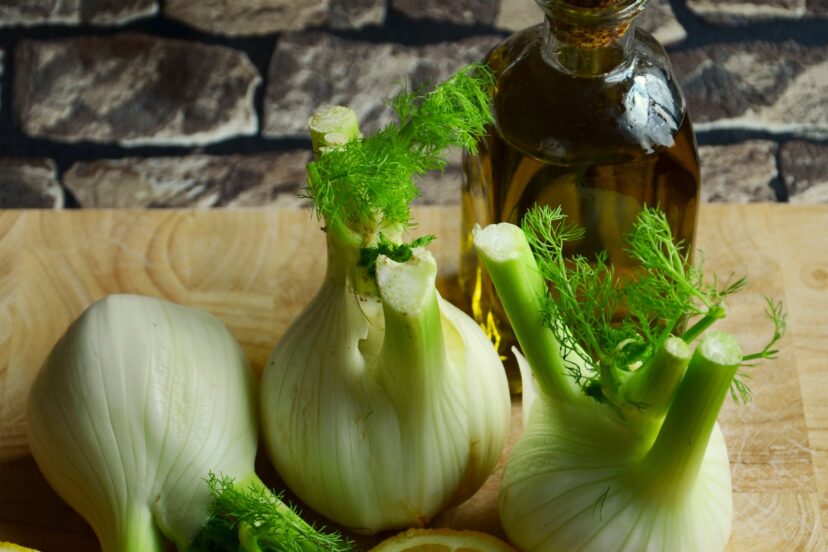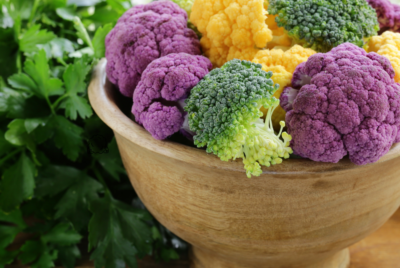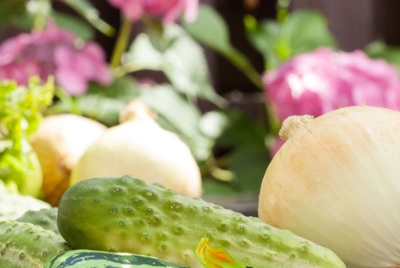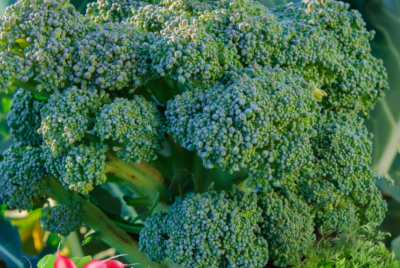Fennel Companion Planting
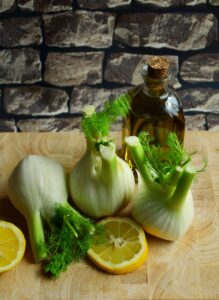
I. Introduction to Fennel Companion Planting
Hello fellow gardeners! Today, I want to share with you a topic that’s close to my heart and shovel – fennel companion planting. As someone who has spent countless hours in the garden, I’ve learned a lot about the dos and don’ts of planting, especially when it comes to companionship in the garden. Fennel, with its striking appearance and unique aroma, has always intrigued me. It’s not just a plant; it’s a character in the garden’s story, playing a crucial role in the harmony and health of your garden space.
Why Fennel is a Unique Garden Choice
Now, you might be wondering, “Why fennel, of all plants?” Well, fennel is not just any ordinary herb. It’s a plant with a personality, so to speak. First off, its appearance is quite striking. With feathery foliage and vibrant yellow flowers, it can turn any garden into a visual spectacle. But the uniqueness of fennel goes beyond its looks. It’s a herb that’s rich in history and flavor, widely used in cooking for its anise-like taste.
But there’s more to fennel than meets the taste buds. In the garden, fennel is a bit of a loner, but in a good way. It has certain peculiarities about where it grows and with whom it shares its space. This is where companion planting comes into play. The idea of companion planting is like matchmaking for plants – you find pairs that complement and bring out the best in each other. And fennel, with its distinct characteristics, requires a bit of careful thought when it comes to finding its perfect plant partners.
Through my journey of trial and error, and a whole lot of reading and consulting with fellow gardeners, I’ve come to understand the intricacies of companion planting with fennel. It’s an art and a science, combining knowledge of plant interactions with a dash of gardening intuition.
In this article, we will explore the fascinating world of fennel companion planting. We’ll delve into what makes fennel a special addition to your garden, how to choose the right companions for it, and tips on how to grow and care for this remarkable plant. Whether you’re a seasoned gardener or just starting, there’s something magical about watching your garden thrive with the right combinations of plants. So, let’s embark on this green journey together and discover the wonders of fennel companion planting!
II. Understanding Fennel
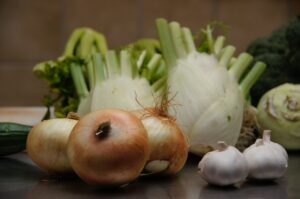
1.What Makes Fennel Special?
Fennel is more than just an ordinary herb; it’s a botanical wonder with a rich tapestry of uses and benefits. This hardy, perennial plant, recognized by its feathery leaves and yellow umbel flowers, is special for a multitude of reasons.
Firstly, fennel is incredibly versatile. It’s not just the fennel bulb that’s edible; the seeds, leaves, and even the pollen are culinary gold. The anise-like flavor of fennel makes it a favorite in dishes ranging from Mediterranean to Asian cuisines. But fennel’s uniqueness isn’t confined to the kitchen. In the garden, fennel plays a dual role: it’s both a visually striking plant and a benevolent neighbor to certain plants (more on that in our companion planting section).
Furthermore, fennel is resilient. It adapts well to various climates and, once established, can tolerate drought conditions. This makes it a suitable choice for gardeners in many regions. Its ability to attract beneficial insects, like pollinators and predatory insects, adds to the ecological balance of a garden, making it an invaluable addition to any green space.
2.Therapeutic Uses of Fennel
The wonders of fennel extend into the realm of health and wellness. Fennel seeds have been used in traditional medicine for centuries, owing to their digestive and anti-inflammatory properties. They’re commonly used in teas and tinctures to alleviate digestive discomforts like bloating and gas. The mild, licorice-like flavor of fennel tea is not only soothing but also offers a natural remedy for soothing an upset stomach.
In addition to digestive health, fennel seeds are known for their beneficial effects on respiratory health. They’re often used in cough syrups and lozenges to ease throat discomfort and coughs. The antioxidants and phytonutrients in fennel contribute to its therapeutic effects, making it a valuable herb in the realm of natural health remedies.
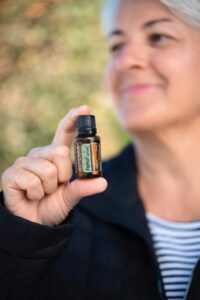
3.Fennel in Oils and Treatments
Fennel’s influence extends to the world of aromatherapy and natural skin treatments as well.
Essential oil extracted from fennel seeds is prized in aromatherapy for its calming and grounding properties.
Its sweet, earthy scent is believed to promote a sense of balance and tranquility, making it a popular choice for stress-relief blends.
In skincare, fennel oil is known for its purifying, toning, and revitalizing properties. It’s often found in natural cosmetic formulations, especially those targeting mature or congested skin.
The oil’s natural compounds can help tone and improve the skin’s appearance, providing a natural glow.
The therapeutic uses of fennel, both in traditional medicine and modern applications, highlight its significance as a plant of both culinary and medicinal value.
Its versatility in the kitchen, garden, and wellness space truly makes fennel a special herb worthy of attention and appreciation.
As we continue to explore fennel companion planting, these attributes will come into play, showing just how multifaceted and beneficial this plant can be in our lives.
III. Benefits of Companion Planting
1.The Advantages of Companion Planting
Companion planting, an age-old gardening practice, involves strategically placing different plants near each other to enhance growth, improve pest control, and maximize space usage. This technique, rooted in permaculture principles, offers numerous advantages that make it an essential aspect of sustainable gardening.
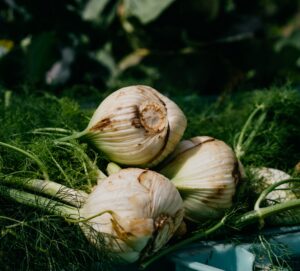
One of the key benefits is pest management. Certain plants can repel pests naturally, reducing the need for chemical pesticides. For example, marigolds emit a scent that deters nematodes and other garden pests.
This natural form of pest control not only protects the plants but also preserves the beneficial insects and the overall health of the garden ecosystem.
Another advantage is improved plant health and growth. Some plant combinations have synergistic effects, where they enhance each other’s growth and vitality.
This can be due to various factors like complementary root systems, nutrient sharing, or mutual shading. For instance, tall plants like corn can provide shade for lower-growing, shade-tolerant plants.
Companion planting also maximizes garden space and increases yield.
By pairing plants with different growth habits and space requirements, gardeners can make the most of their garden area.
This approach is particularly beneficial in small gardens or urban spaces where efficient use of space is crucial.
Furthermore, companion planting promotes biodiversity, which is essential for a healthy and resilient garden.
A diverse planting strategy mimics natural ecosystems, creating a more balanced and sustainable garden environment.
This diversity can also improve soil health and reduce the spread of diseases.
2.How Companion Planting Benefits Fennel
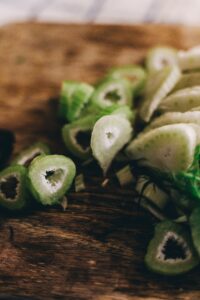
When it comes to fennel, companion planting plays a significant role in its cultivation.
Fennel, with its unique growth requirements and characteristics, can greatly benefit from being paired with the right plants.
Firstly, certain companions can help improve fennel’s growth. For instance, plants like mint or dill can repel pests that might otherwise be attracted to fennel.
This natural pest control can lead to healthier, more robust fennel plants.
Additionally, companion plants can help optimize the conditions for fennel’s growth.
Fennel prefers well-drained soil and plenty of sunlight.
Planting it with companions that have similar requirements can create a harmonious growing environment.
This compatibility ensures that the plants do not compete aggressively for resources but rather support each other’s growth.
Companion planting can also prevent the spread of diseases.
By mixing fennel with other plants, gardeners can disrupt the habitat for disease-carrying pests, reducing the chances of disease outbreaks.
This approach is especially beneficial for fennel, which can be susceptible to certain fungal diseases.
Lastly, companion planting with fennel can enhance the overall biodiversity of the garden. Fennel attracts beneficial insects like ladybugs and bees, which are crucial for pollination and natural pest control.
These insects not only benefit the fennel but also the surrounding plants, creating a more productive and balanced garden ecosystem.
In summary, the benefits of companion planting are manifold, especially when it comes to growing fennel.
By understanding and implementing these principles, gardeners can enjoy a healthier, more bountiful garden with fennel as a central, thriving components.
IV. Best Companion Plants for Fennel
1.Ideal Companions for Your Fennel Plant
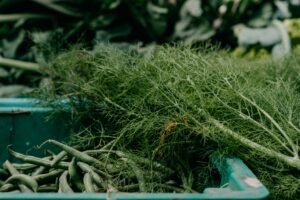
Fennel, with its unique characteristics, can be a bit finicky about its neighbors. However, when paired with the right companions, it can thrive, contributing to a healthier and more productive garden.
Here are some ideal companions for fennel:
a. Dill
Sharing similar aesthetic and environmental preferences, dill is a good companion for fennel.
Both herbs benefit from full sun and well-drained soil. They can create an aromatic herb section in your garden.
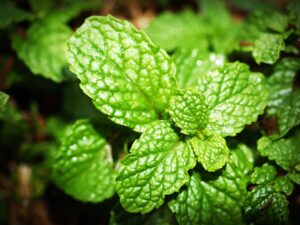
b. Mint
Known for its strong scent, mint can help repel pests that might target fennel. However, be cautious as mint tends to spread aggressively. Planting mint in containers near fennel can be a good solution.
c. Basil
Basil and fennel can benefit each other. Basil’s strong scent can deter pests, and it thrives in similar sunny conditions as fennel.
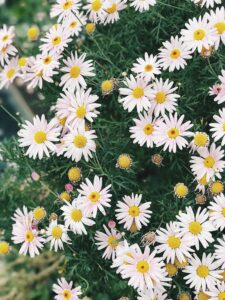
d. Chamomile
This herb not only improves the flavor of fennel when planted nearby but also attracts beneficial insects.
e. Flowering plants like Cosmos and Nasturtium
These flowers attract pollinators and beneficial insects, which in turn help in the overall health of fennel and other garden plants.
f. Plants That Enhance Fennel Growth
Certain plants can enhance fennel’s growth by improving soil conditions or by attracting beneficial insects:
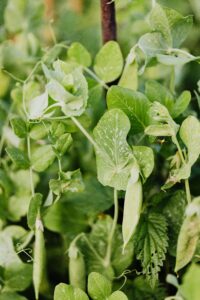
g. Legumes (Beans and Peas)
These plants fix nitrogen in the soil, which can be beneficial for fennel. However, it’s crucial to maintain adequate spacing as fennel needs room to grow.
h. Marigolds
Planting marigolds nearby can deter pests, thanks to their natural insect-repelling properties.
i. Herbs and Vegetables That Pair Well with Fennel
When it comes to companion planting, it’s not just about who gets along but also who benefits each other. Here are some herbs and vegetables that pair well with fennel:
j. Lettuce
Lettuce can benefit from the light shade provided by fennel on hot days. It’s a low-growing plant that won’t compete with fennel for sunlight.
k. Cucumbers
They share similar growing conditions with fennel and can be planted nearby without issue.
l. Tomatoes
Some gardeners have found success in planting tomatoes near fennel. They can provide mutual support, especially if the tomatoes are staked, allowing fennel to lean on them slightly for support.
It’s important to note that while fennel gets along with these plants, it should be kept away from caraway, coriander, and beans, as they can inhibit each other’s growth.
In conclusion, choosing the right companions for fennel can lead to a harmonious and productive garden. By understanding the specific needs and benefits of these plants, gardeners can create a balanced ecosystem where each plant supports the other, leading to a thriving garden full of flavor and vitality.
5. Plants to Avoid Near Fennel
While fennel is a wonderful addition to many gardens, it’s important to be aware of its less-than-friendly relationships with certain plants. Some plants can have a detrimental effect on fennel’s growth or vice versa, leading to a less productive garden. Here are some plants to avoid planting near fennel:
1.Coriander and Caraway
These herbs can inhibit fennel’s growth. Their similar growth patterns and requirements can lead to competition for resources, which is not ideal for either plant.
2.Beans and Peas
Legumes, such as beans and peas, are generally beneficial to most plants due to their nitrogen-fixing ability. However, in the case of fennel, they tend to compete aggressively for soil nutrients, which can impede the growth of both.
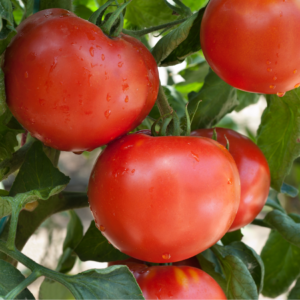
3.Tomatoes
While some gardeners have found success with tomatoes and fennel, it’s generally advisable to keep them apart. Fennel can inhibit tomato growth, possibly due to allelopathic chemicals that fennel roots exude.
4.Wormwood
This herb can negatively affect the growth of many plants, including fennel, due to its strong allelopathic properties.
5.Kohlrabi
Being a member of the brassica family, kohlrabi can stunt fennel’s growth if planted too close.
Another plant that should not be planted near fennel, as they can cross-pollinate, leading to undesirable traits in both plants.
Avoiding Negative Plant Interactions
To ensure the health and productivity of your fennel and the surrounding plants, it’s crucial to plan your garden layout with these considerations in mind. Avoiding negative plant interactions involves more than just physical spacing; it’s about understanding the biological and chemical interactions between different species.
For example, fennel’s allelopathic nature means it can release compounds into the soil that might inhibit the growth of nearby plants. This is why it’s often recommended to plant fennel at a distance from other vegetables and herbs, especially those mentioned above.
Additionally, fennel’s tall and bushy structure can overshadow smaller plants or those that require a lot of sun. Therefore, it’s essential to consider the light requirements of neighboring plants when positioning fennel in your garden.
In summary, while fennel can be a valuable addition to a garden, it’s important to be mindful of its potential negative interactions with certain plants. By carefully selecting its neighbors and considering the unique requirements of each plant, you can create a harmonious and thriving garden ecosystem.
VI. Tips for Planting
a. Planting Fennel: Best Practices
Planting fennel can be a delightful addition to your garden, but it requires some know-how to ensure it thrives. Here are some best practices to consider when planting fennel:
Choose the Right Location
Fennel prefers a sunny spot in your garden. It needs at least 6 to 8 hours of sunlight daily to thrive. Ensure the area is well-drained as fennel doesn’t like soggy roots.
Spacing
Fennel plants need room to grow. Space them about 12 to 18 inches apart. This spacing allows adequate air circulation, which is vital for preventing fungal diseases.
Soil Preparation
Fennel grows best in rich, fertile soil. Before planting, enrich your soil with compost or a balanced organic fertilizer. The soil should have a pH between 6.0 and 7.0.
Planting Depth
When sowing fennel seeds, plant them about a quarter-inch deep into the soil. If you’re transplanting seedlings, ensure they’re planted at the same depth they were in the pot.
Watering
Fennel needs regular watering, especially during dry spells. Keep the soil consistently moist but not waterlogged. Overwatering can lead to root rot.
Mulching
Apply a layer of organic mulch around the fennel plants. This helps retain soil moisture, keeps the roots cool, and suppresses weeds.
V. Soil, Watering, and Sunlight Needs
Fennel’s growing requirements are specific but not demanding:
Soil
Fennel prefers a well-draining soil rich in organic matter. It doesn’t do well in compacted or clay-heavy soils.
Watering
Consistent watering is key, especially when the plants are young and establishing. Once mature, fennel is somewhat drought-tolerant but will benefit from regular watering.
Sunlight
As mentioned, fennel thrives in full sun. In regions with very hot summers, some afternoon shade can be beneficial to prevent bolting (premature flowering).
VI. Seasonal Planting Tips
When to Plant
The best time to plant fennel is in the spring, after the last frost. Fennel can handle a light frost, but young plants are more sensitive to cold.
Temperature
Fennel grows best in temperatures between 50°F and 70°F. Extreme heat can cause fennel to bolt, so in hotter climates, try to provide some afternoon shade.
Bolting
To prevent bolting in warmer climates, you can try planting fennel in the late summer for a fall harvest.
Succession Planting
For a continuous supply, practice succession planting. Sow seeds every few weeks throughout the growing season.
By following these planting tips and understanding fennel’s specific needs, you’ll be well on your way to successfully growing this aromatic and versatile herb. Remember, the key to a thriving fennel plant lies in the right balance of sunlight, water, and soil conditions. With careful attention to these factors, your fennel will not only grow but also become a beautiful and functional addition to your garden, offering both culinary delights and a haven for beneficial insects.
VII. Maintenance and Care
Keeping Your Fennel Healthy
To ensure your fennel plants flourish, ongoing maintenance and care are crucial. Fennel, while not overly demanding, does require some regular attention to remain healthy and productive. Here are some key aspects to focus on:
Watering
While established fennel plants are somewhat drought-resistant, consistent watering during their growing phase is important. Aim to keep the soil evenly moist but not waterlogged. Overwatering can lead to root rot, so good drainage is essential.
Weeding
Regular weeding around your fennel plants is important to reduce competition for nutrients and water. Be gentle when weeding, as fennel roots can be disturbed easily.
Mulching
Applying a layer of organic mulch around fennel plants helps retain moisture, regulate soil temperature, and suppress weeds. Mulch also gradually breaks down, adding nutrients back into the soil.
Feeding
Fennel benefits from occasional feeding. Use a balanced, all-purpose organic fertilizer midway through the growing season to support its growth.
Pest Control
Keep an eye out for common pests like aphids and slugs. These can be managed through natural methods like introducing beneficial insects, using organic insecticidal soaps, or manual removal.
Beneficial Insects for Pest Control
Ladybugs
Ladybugs, or lady beetles, are natural predators of aphids. They can consume a large number of aphids daily, making them a great ally in controlling aphid populations.
Lacewings
Green lacewings are another effective predator of aphids. Their larvae are particularly voracious and can help keep aphid numbers in check.
Hoverflies
Also known as flower flies, hoverflies’ larvae feed on a variety of soft-bodied insects, including aphids.
Ground Beetles
These beetles are beneficial for controlling slug populations as they prey on slug eggs and young slugs.
Parasitic Wasps
Certain species of parasitic wasps can help control aphid populations by laying their eggs inside aphids, which then become food for the developing wasp larvae.
By encouraging these beneficial insects in your garden, you can naturally reduce the pest populations. Planting a diverse range of flowers and herbs can attract these beneficial predators to your garden.
Homemade Insecticidal Soap Recipe
Insecticidal soap is a safe and effective way to deal with pests like aphids and slugs without harming beneficial insects or the environment. Here’s a simple recipe you can make at home:
Ingredients:
1 tablespoon of mild liquid soap (like castile soap)
1 quart of water
Instructions:
Mix the Soap and Water
In a spray bottle, combine the mild liquid soap with water. Ensure the soap is pure and free of additives like fragrances and dyes, as these can harm plants.
Test on Plants
Before applying broadly, test the solution on a small area of the plant. Wait 24 hours to check for adverse reactions.
Application
Spray the solution directly onto the affected areas of the plants, targeting the pests. Be sure to reach the undersides of leaves where pests often hide.
Repeat if Necessary
Apply the soap spray every 2-3 days for two weeks or until the pest problem is under control. The soap works by breaking down the pests’ outer layer, leading to dehydration.
Timing
Apply the spray in the early morning or late evening to avoid the sunniest parts of the day, which can cause the solution to dry too quickly and be less effective.
Remember, while insecticidal soap is a gentler pest control option, regular monitoring and prompt action are key to keeping pest populations under control. Combining these natural strategies can help maintain a healthy, thriving fennel garden.
Disease Prevention
Fennel can be susceptible to fungal diseases, especially in humid conditions. Ensuring good air circulation around plants and avoiding overhead watering can help prevent these issues.
Fennel Companion Planting-Regular Maintenance Tips
Thinning Seedlings
If you’ve sowed fennel seeds directly into the garden, thin the seedlings once they’re a few inches tall to ensure adequate space for growth.
Staking
Tall fennel varieties might require staking to prevent them from falling over, especially in windy areas or when they become top-heavy with seeds.
Bolting Management
In hot weather, fennel may bolt (go to seed prematurely). While this is often inevitable, regular watering and mulching can help delay bolting. Once a fennel plant has bolted, the bulb becomes tough and less flavorful, so it’s best to harvest it promptly.
Harvesting Leaves and Seeds
You can harvest fennel leaves as needed throughout the growing season. For seeds, wait until the flower heads turn brown. Cut the heads and hang them upside down in a warm, dry place to collect the seeds.
End-of-Season Care
After harvesting, cut back the fennel plants and add a layer of compost to prepare the bed for the next season. In areas with mild winters, fennel can be left in the ground for regrowth in the spring.
By following these maintenance and care tips, your fennel plants should remain healthy, vibrant, and productive. Regular monitoring and a little TLC go a long way in ensuring a bountiful fennel harvest and a thriving garden ecosystem.
VIII. Harvesting Fennel
When and How to Harvest Fennel
Harvesting fennel at the right time and in the right way is essential to enjoy the best flavor and texture that this versatile herb has to offer. Here’s how to determine when your fennel is ready to harvest and the best methods to do so:
Timing
Fennel is typically ready to harvest when the base of the bulb becomes swollen and the plant is about the size of a small tennis ball. This usually happens about 90 to 115 days after sowing. Harvesting should ideally be done before the plant flowers, as flowering can make the bulb tough and less flavorful.
Bulb Harvesting
To harvest the bulb, use a sharp knife or garden shears and cut close to the ground, just above the soil line. Be careful not to damage the bulb as you cut.
Leaf Harvesting
Fennel leaves can be harvested as soon as the plant is well established and has several sets of leaves. Snip the feathery foliage as needed for fresh use. Regular trimming of the leaves encourages more growth.
Seed Harvesting
If you’re harvesting fennel for its seeds, wait until the flower heads turn brown. Cut the flower stalks and hang them upside down in a warm, dry place. Once dried, shake the seeds loose and store them in an airtight container.
Maximizing Your Fennel Yield
To ensure a bountiful harvest of fennel, follow these tips:
Consistent Watering
Keep the soil consistently moist, especially during dry spells. This is crucial when the bulbs are forming.
Regular Feeding
Apply a balanced, all-purpose fertilizer midway through the growing season to nourish your fennel plants.
Weed Control
Keep the area around your fennel plants free of weeds. Weeds compete for nutrients and water, which can impact the size and quality of your fennel bulbs.
Mulching
Mulch around the fennel plants to maintain soil moisture and temperature, which is beneficial for bulb development.
Bolting
PreventionIn hot climates, provide some shade to prevent bolting. Once fennel plants bolt, the bulbs become tough.
Succession Planting
Plant new fennel seeds every few weeks during the growing season. This practice ensures a continuous supply of fennel throughout the season.
Pest and Disease Management
Regularly inspect your plants and address any signs of pests or disease promptly to avoid significant impact on your yield.
By following these tips, you can enjoy a healthy and plentiful harvest of fennel, whether it’s the crisp bulbs, aromatic leaves, or flavorful seeds. Remember, the key to a successful harvest lies in careful observation and regular care of your fennel plants.
IX. Using Harvested Fennel
a. Creative Ways to Use Your Fennel
Once you’ve harvested your fennel, the possibilities for its use are nearly endless. Fennel is a versatile ingredient that can add a unique flavor to a wide range of dishes. Here are some creative ways to utilize your harvested fennel:
Fresh Fennel Salads
Thinly slice the fennel bulb and mix it with other fresh vegetables for a crunchy, refreshing salad. The anise-like flavor of fennel pairs well with citrus fruits, apples, and a variety of dressings.
Roasted Fennel
Roasting fennel bulbs brings out a sweet, caramelized flavor. Simply slice the bulbs, drizzle with olive oil, season with salt and pepper, and roast until tender.
Fennel Soups and Stews
Chopped fennel bulb can add depth to soups and stews. Its aromatic flavor enhances chicken or vegetable broths and pairs well with beans, lentils, and potatoes.
Fennel Tea
The seeds and leaves of fennel make a delightful tea. Steep them in hot water for a soothing herbal infusion known to aid digestion.
Fennel Fronds as Herbs
The delicate fronds can be used similarly to fresh herbs like dill or parsley. Sprinkle them over dishes for a subtle fennel flavor and a touch of green.
Grilled Fennel
Grilling fennel bulbs imparts a smoky flavor. Cut the bulbs into thick slices, brush with oil, and grill until charred and tender.
Pickled Fennel
Pickle sliced fennel bulbs with vinegar, sugar, and spices for a tangy treat that can be added to sandwiches, salads, or served as a condiment.
Fennel Seed Seasoning
Dry the fennel seeds and use them as a spice. They are excellent for flavoring bread, sausage, and fish dishes.
b. From Garden to Table
Fennel Recipes
Let’s bring your garden harvest to the table with these simple yet delicious fennel recipes:
Fennel and Orange Salad
Combine thinly sliced fennel bulbs with orange segments, olive oil, lemon juice, salt, and pepper. Top with chopped fennel fronds for a refreshing and vibrant salad.
Creamy Fennel Soup
Sauté chopped fennel bulbs and onions until soft. Add vegetable broth, bring to a boil, then simmer. Blend until smooth, stir in cream, and season with salt and pepper for a comforting soup.
Braised Fennel with Tomatoes
Slice fennel bulbs and braise them in a mixture of diced tomatoes, garlic, and white wine. Cook until the fennel is tender and the flavors meld together for a hearty side dish.
Fennel Seed Bread
Incorporate crushed fennel seeds into your bread dough before baking to add an aromatic twist to homemade bread.
Roasted Fish with Fennel
Place a whole fish or fish fillets on a bed of sliced fennel and onions, season with salt, pepper, and lemon slices, and roast until the fish is cooked through.
These recipes are just a starting point to inspire you to incorporate fennel into your cooking. Whether fresh, roasted, pickled, or used as a seasoning, fennel harvested from your garden can transform ordinary dishes into extraordinary culinary experiences.
X. Fennel’s Impact on Garden Ecosystem
a. Fennel’s Role in Your Garden’s Ecosystem
Fennel is not just a culinary delight; it’s also an ecological boon to your garden. Its impact on the garden ecosystem is significant and multifaceted, making it a valuable plant for more than just its flavor.
Biodiversity Booster
Fennel, with its unique flowering structure and foliage, adds diversity to your garden. Biodiversity is crucial in creating a balanced and healthy garden ecosystem, as it encourages a variety of interactions among different organisms.
Attracting Pollinators
The yellow umbel flowers of fennel are a magnet for pollinators like bees and butterflies. These insects are vital for the pollination of many other plants in your garden, leading to better fruit and seed production.
Habitat for Beneficial Insects
Fennel acts as a habitat for beneficial insects, not just pollinators. Ladybugs, lacewings, and hoverflies, which are natural predators of common garden pests like aphids and mites, are often found in and around fennel plants.
Soil Health
Fennel’s root system can help in aerating the soil, thus improving soil structure and health. Healthy soil is the foundation of a productive garden.
Companion Planting
As discussed earlier, fennel can be a good companion to certain plants, providing mutual benefits such as pest control and nutrient sharing.
Natural Pest Repellant
Fennel’s strong aroma can repel certain pests, making it a natural pest control solution that reduces the need for chemical pesticides.
b. Attracting Beneficial Insects with Fennel
Provide a Variety of Flowers
Fennel’s flowers are excellent at attracting beneficial insects, but having a variety of flowering plants in your garden will ensure a more diverse insect population.
Avoid Pesticides
Using chemical pesticides can harm the beneficial insects that fennel attracts. Opt for natural pest control methods to keep these helpful creatures safe.
Leave Some Fennel to Flower
Allow some of your fennel plants to go to flower. The flowers are where many beneficial insects will congregate.
Create Insect Habitats
Apart from planting fennel, consider creating habitats for beneficial insects, such as leaving some areas of the garden undisturbed or providing nesting sites for bees.
Water Sources
Including small water sources, like a shallow bird bath or a drip irrigation system, can help beneficial insects thrive in your garden.
By understanding and nurturing fennel’s role in your garden’s ecosystem, you can create a more productive, healthy, and environmentally friendly gardening space. Fennel’s ability to attract beneficial insects, contribute to soil health, and enhance biodiversity makes it an invaluable plant for any gardener looking to create a sustainable and thriving garden.
XI. Fennel Companion Planting – Common Issues and Solutions
a. Troubleshooting Common Fennel Problems
Fennel, while a resilient and adaptable plant, can occasionally encounter some issues. Being aware of these common problems and knowing how to address them is key to maintaining a healthy fennel crop. Here are some troubleshooting tips:
Bolting
Fennel has a tendency to bolt (flower prematurely) in hot weather or if it experiences stress. To prevent bolting, keep the soil consistently moist and provide some shade during the hottest part of the day. Once a plant has bolted, the bulb becomes tough and loses flavor.
Poor Bulb Formation
If your fennel plants aren’t forming large bulbs, it might be due to overcrowding, insufficient watering, or poor soil nutrients. Ensure adequate spacing, regular watering, and apply a balanced fertilizer to encourage bulb growth.
Yellowing Leaves
Yellow leaves can indicate overwatering, poor drainage, or a nutrient deficiency. Adjust your watering schedule, ensure good soil drainage, and consider a soil test to check for nutrient imbalances.
Leggy Plants
If fennel plants are too leggy, they may not be receiving enough sunlight. Fennel needs full sun to thrive, so consider relocating them to a sunnier spot if possible.
b. Addressing Pests and Diseases
Aphids
These small, sap-sucking pests can weaken fennel plants. Address aphids by spraying them off with water, using insecticidal soap, or by introducing natural predators like ladybugs.
Whiteflies
Similar to aphids, whiteflies can be controlled with insecticidal soap or by attracting beneficial insects that prey on them.
Slugs and Snails
These pests are attracted to fennel, especially young plants. Use organic slug baits, barriers like eggshells or diatomaceous earth, or handpick them off at night.
Powdery Mildew
This fungal disease appears as white, powdery spots on leaves. Improve air circulation, avoid overhead watering, and apply a fungicide if necessary.
Root Rot
Overwatering can lead to root rot. Ensure well-draining soil and adjust watering practices. Infected plants should be removed to prevent the spread of the disease.
Fennel Rust
This fungal disease causes orange, rust-like spots on the leaves. Remove affected parts, improve air circulation, and apply a fungicide if the problem is severe.
Regular monitoring of your fennel plants and prompt action when problems arise are vital for maintaining a healthy garden. By addressing issues early and employing organic and sustainable gardening practices, you can enjoy a bountiful and healthy fennel harvest.
XII. Conclusion on Fennel Companion Planting
a. Embracing Fennel in Your Garden
As we wrap up this exploration of fennel and its role in the garden, it’s clear that this herb is not just a culinary treasure but also a valuable player in the garden ecosystem.
Whether you’re a seasoned gardener or a beginner, incorporating fennel into your garden offers a unique opportunity to experience the joys and benefits of gardening with an aromatic and versatile plant.
Fennel’s feathery foliage and striking yellow flowers bring beauty to the garden, while its ability to attract beneficial insects contributes to a healthier, more balanced garden environment. The versatility of fennel, from its bulb to its seeds, presents endless culinary possibilities, making it a favorite among home cooks and chefs alike.
b. Summary of Fennel’s Companion Planting Benefits
Pest Control
Fennel’s strong aroma can naturally repel certain garden pests, reducing the need for chemical pesticides.
Attracting Beneficial Insects
The flowers of fennel are especially attractive to beneficial insects like bees, butterflies, and ladybugs, which are crucial for pollination and natural pest control.
Soil Health
Fennel’s root system can help aerate the soil, improving soil structure and health.
c. Companion Planting Synergies
Fennel pairs well with certain plants like dill, mint, and lettuce, creating synergies that benefit the overall health and productivity of your garden.
Culinary Uses
Fennel is a versatile herb in the kitchen, used in a wide range of dishes from salads to soups, and its seeds are valued for their flavor and medicinal properties.
In conclusion, fennel is a plant with much to offer. Its ease of care, coupled with its environmental and culinary benefits, makes it a worthy addition to any garden. By understanding fennel’s unique needs and strengths, gardeners can not only enjoy its delightful flavor but also contribute to a more sustainable and vibrant garden ecosystem.
Embrace fennel in your garden, and you’ll find that it brings not just flavor to your table, but also life and health to your garden.
FAQ’s about Fennel Companion Planting
1.What are the best plants for fennel companion planting?
The best buddies for fennel companion planting include dill, mint, and lettuce. These plants share similar growing conditions and can benefit from being near each other. Dill and mint help repel pests, while lettuce can benefit from the light shade provided by fennel.
2.Can I plant tomatoes for fennel companion planting?
It’s generally not recommended to plant fennel next to tomatoes. Fennel can inhibit the growth of tomatoes due to allelopathic* properties (see below). It’s better to keep them in separate areas of your garden.
3.How do I prevent my fennel from bolting?
To prevent fennel from bolting, ensure it receives consistent moisture and some shade during the hottest part of the day. Bolting is often triggered by stress, such as heat waves or dry soil, so maintaining a stable environment helps.
4.When is the best time to harvest fennel bulbs?
The best time to harvest fennel bulbs is when they are about the size of a small tennis ball and before the plant flowers. This is typically 90 to 115 days after sowing. Harvesting at this stage ensures the bulbs are tender and flavorful.
5.Can fennel be grown in containers?
Yes, fennel can be successfully grown in containers. Make sure to use a large enough container to accommodate the root growth and provide adequate drainage. Container-grown fennel will still require full sun and consistent watering to thrive.* Allelopathic properties
Refers to the biological phenomenon where a plant releases certain chemicals into the soil that can affect the growth and development of surrounding plants. These chemicals, known as allelochemicals, can be found in various parts of the plant, including roots, leaves, stems, and seeds. They are released into the environment through processes like decomposition, volatilization, or leaching.
Allelochemicals can have a range of effects on other plants, including:
Inhibiting Seed Germination
Some allelochemicals can prevent seeds of neighboring plants from germinating, effectively reducing competition for resources like nutrients, water, and sunlight.
Suppressing Growth
They can also hinder the growth of nearby plants by affecting root growth, shoot elongation, and overall plant development. This can lead to stunted growth or reduced vigor in affected plants.
Interfering with Nutrient Uptake
Allelopathic chemicals can alter the soil’s nutrient composition or the ability of other plants to absorb these nutrients, leading to nutrient deficiencies.
Affecting Microbial Activity
These chemicals can influence the microbial community in the soil, which in turn affects soil health and the availability of nutrients.
In the case of fennel, its allelopathic properties can inhibit the growth of certain plants, like tomatoes, when planted in close proximity. The chemicals released by fennel can interfere with the normal growth processes of tomatoes, leading to issues like reduced growth or lower yields. Therefore, it’s recommended to plant fennel away from tomatoes and other sensitive plants to avoid these negative interactions.
The Ultimate Guide To Growing Low-Oxalate Foods in Your Garden.
Companion Planting 101 – The Key To Successful Low-Oxalate Gardening
Boost Your Garden’s Health With Cauliflower Companion Planting
Growing Fruit Trees and Vegetables in Air Pruning Pots
Top Tips for Growing Peach Trees in Pots
The Best Fruit Trees for Containers

